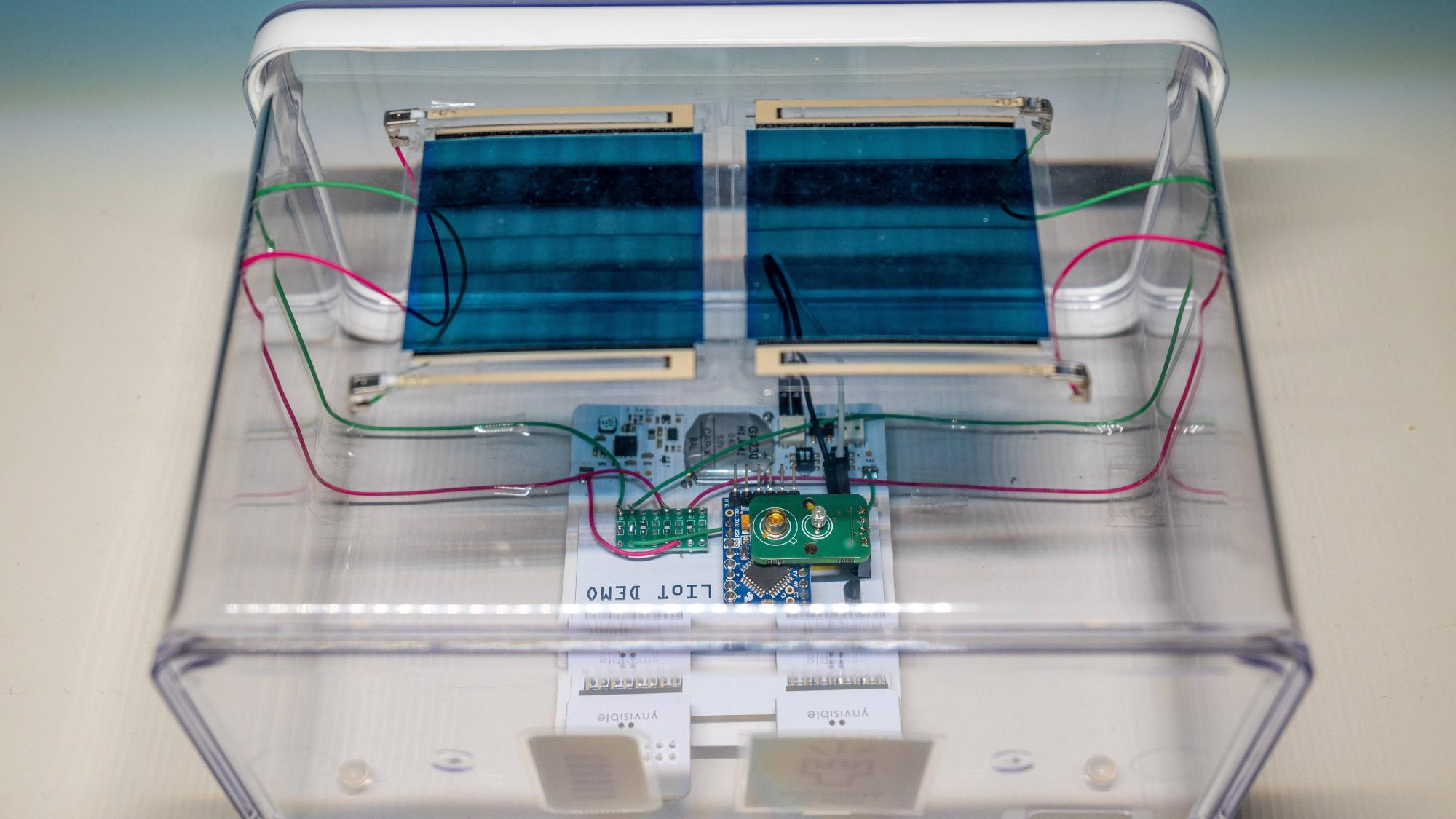The future LED light both illuminates and communicates

We live in urban environments where lighting is ubiquitous. We light our homes, offices, hospitals, and factories to keep everyday life running smoothly. But what if all that visible light could be used not only to illuminate spaces but also to transfer information and as a power source?
By 2035, white LEDs are expected to provide approximately 95% of indoor lighting globally. Because these LEDs can be easily and rapidly controlled (unlike conventinoal light sources), researchers are exploring ways to add additional functionalities to the lighting infrastructure. The possibilities light offers are being explored at the University of Oulu as part of the SUPERIOT project, led by Professor Marcos Katz, a 6G research expert.
Light offers advantages that radio-based communication cannot match. It’s fast, secure, and doesn’t interfere with equipment that relies on radio signals. Among its key advantages is energy efficiency, achieved by using the energy consumed for lighting to also transmit information.
“Developing light-based communication is rooted in sustainability. We’re studying how existing infrastructure, like lighting, can be used in new ways,” says Professor Katz.
A flickering LED light spells out its message like morse code
Today’s mobile networks rely on radio technology. In visible light communication (VLC), information is transmitted using visible light instead of radio waves.
At home, light-based data transfer could replace wireless Wi-Fi networks with Li-Fi, or “light fidelity”. The transmitter could be a standard LED lamp—for example, a desk lamp that also functions as a Wi-Fi router, sending information to a receiving device.
Professor Katz compares this to Morse code.
“The LED lamp is modulated to flicker, and the receiver interprets the flicker. When the light is on, the receiver reads a one; when it’s off, a zero.”
A computer or smartphone decodes the light signals, while the flicker is far too fast for the human eye to see. The remote worker sees only a steady glow from the lamp as the webinar starts on the laptop.
Data transmission can also occur in the reverse direction through invisible light, for instance infrared, enabling everyday tasks such as sending an email.
“It would be distracting if visible white light were emitted from a phone or computer. Infrared light allows data to be sent discreetly,” Katz explains.
Light carries messages in sensitive environments
Katz’s team is developing light-based communication for environments where radio signals might interfere with sensitive equipment, such as hospitals, factories, or aircraft. Hospitals restrict phone use in some areas, as radio signals can disturb medical equipment. For the same reason, phones must be set to flight mode on aircraft.
“With light, there’s no such problem. Our goal is that in the future devices could switch flexibly between light and radio, depending on the environment,” Katz says.
Security is another major advantage. Light-based data stream can only be received by someone physically present in the same space as the source.
When the light source is in a closed room, there’s no way for anyone outside to tap into the signal,” Katz says.
Katz says light won’t replace radio technology but complement it. It has clear advantages, but also has its limitations. After all, there are no streetlights in the forest, so sharing a photo from a hiking trip will still rely on radio waves.
Efficient light communication also needs a clear line of sight between the transmitter and receiver.
“If a finger happens to block the smartphone’s light sensor, the connection weakens or cuts out entirely, prompting the device to fall back on radio waves,” Katz explains.
Harvesting power from light to save natural resources
Beyond data transfer, light has another promising role that supports the SUPERIOT project’s vision of a more sustainable Internet of Things (IoT). In future smart cities, a growing number of devices will collect data from their surroundings and transmit it autonomously.
Katz says the aim is for the devices to power themselves from surrounding LED light, using tiny solar cells rather than batteries.
“This could save a huge number of disposable batteries. IoT devices that monitor the environment use so little energy that they can operate entirely on light from their surroundings,” Katz says.
Sustainability is also pursued through printed electronics.
Many modern devices, from smartphones to sensors, depend on components made from scarce materials. Katz’s team is looking for ways to print them using much less.
“Our vision is to print complete IoT devices. The finished product would be a sticker no larger than a bank card, designed to carry out its function seamlessly within the Internet of Things.”
A printed tag like this could track temperature or humidity in an office and automatically guide ventilation. Or, in a more everyday setting, a milk carton could feature a printed label that updates its price in real time and later reminds the buyer at home to return a recalled batch.
The project has also developed printed IoT devices for hospital environments. They can be used to track the locations of equipment and staff, and to monitor patients’ well-being in real time.
"A sensor on a patient could send an instant alert to nurses if they fall or if their temperature climbs too high,” Katz says.
These printed IoT devices embody the full potential of light.
“They could use both radio and light for data transmission, remaining safe even in environments sensitive to radio waves. At the same time, they would harvest their energy from the surrounding light.”